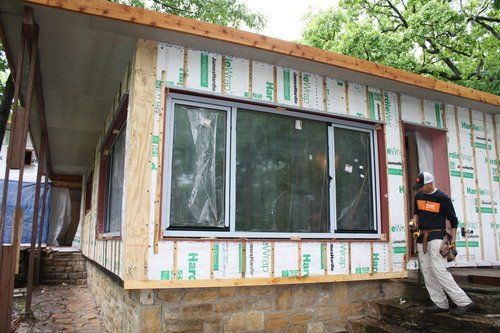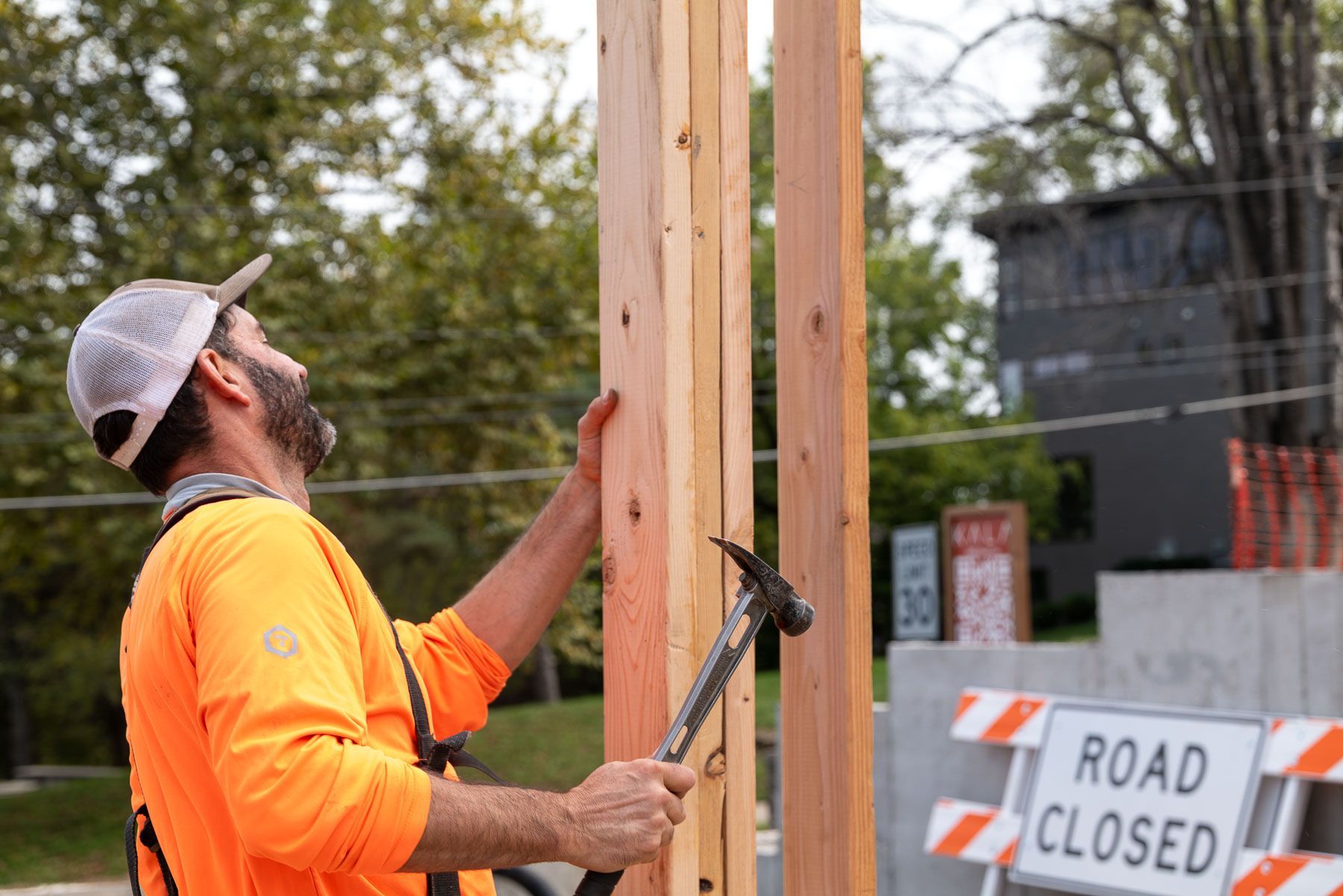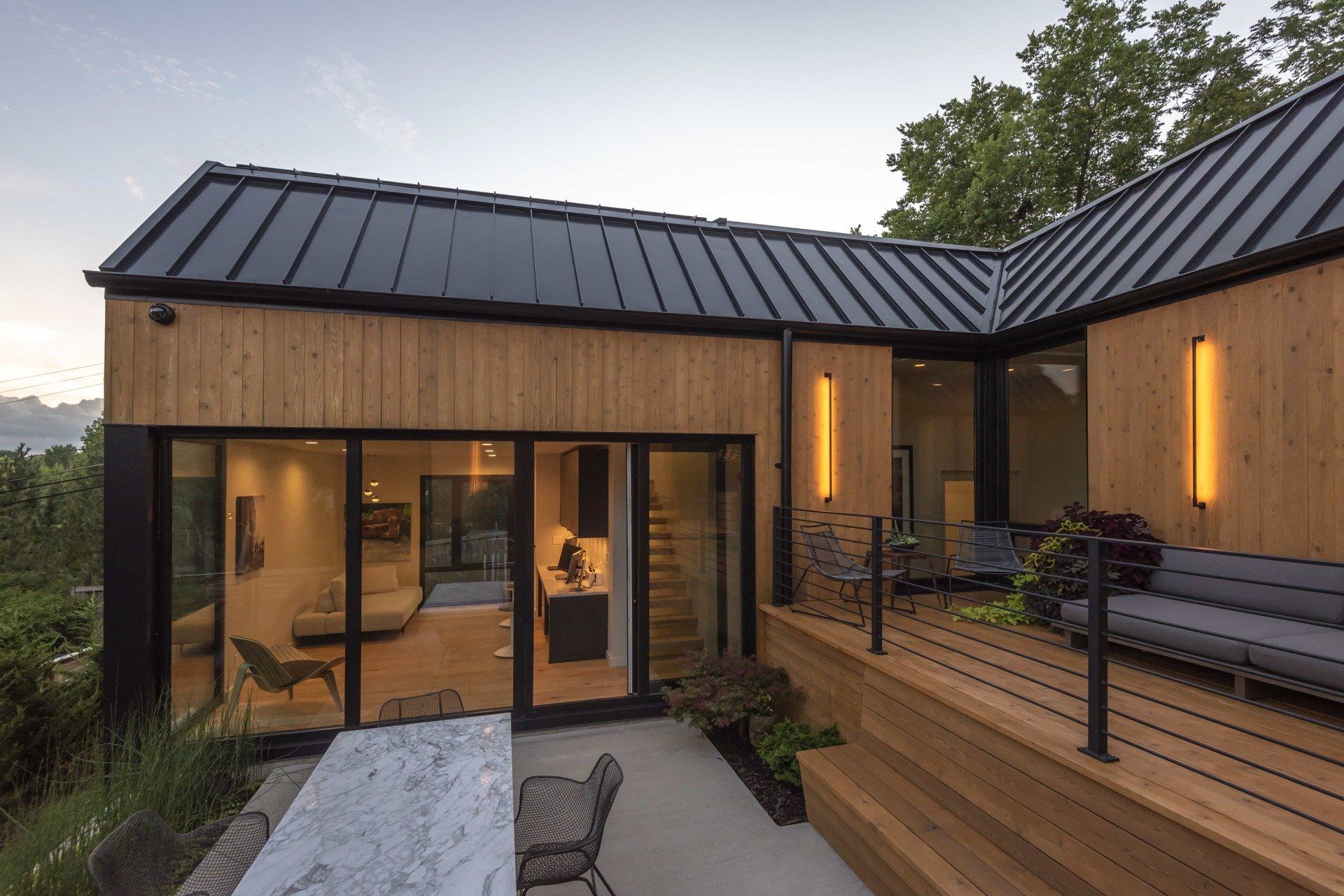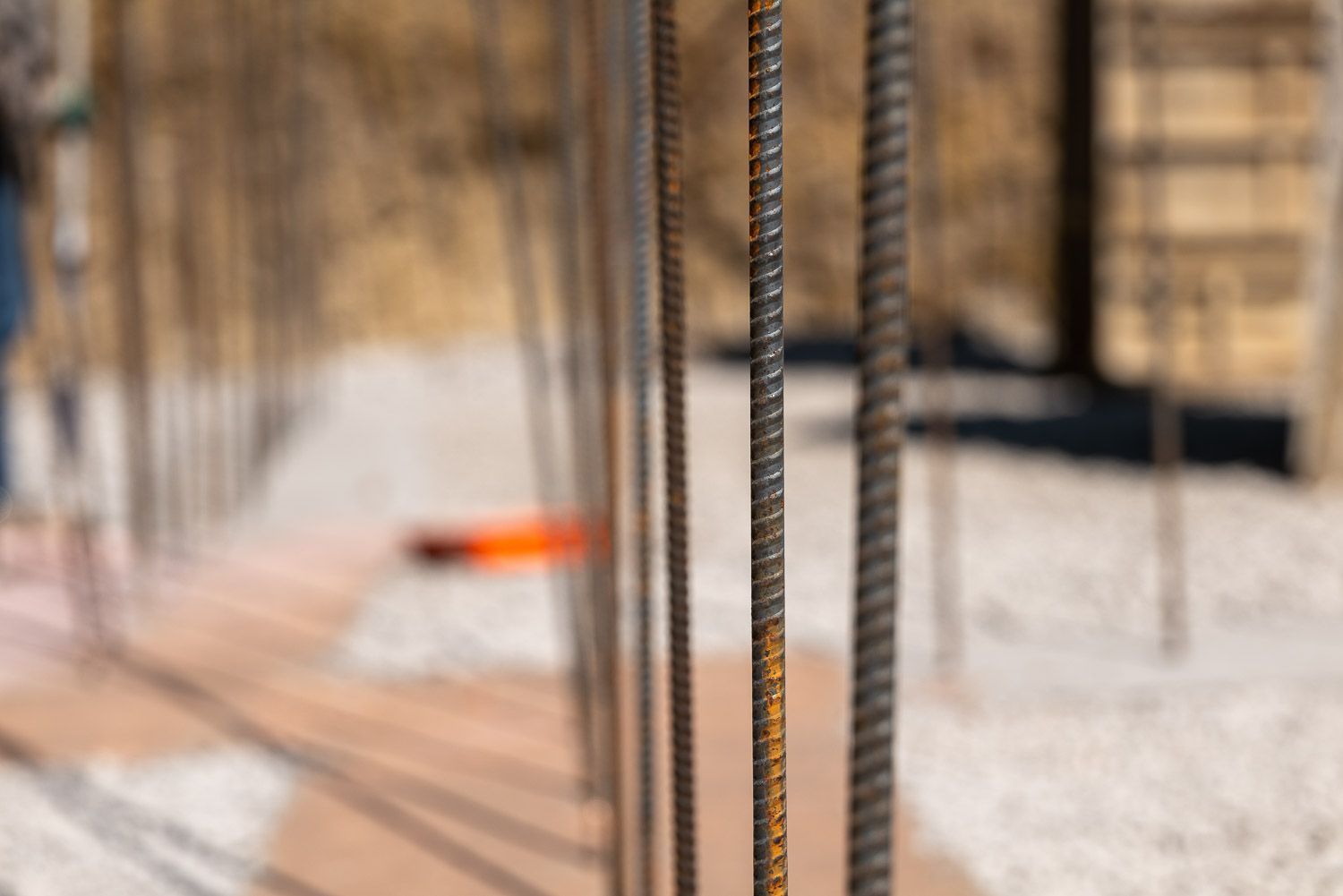Lake Quivira Passive House - High Performance Window Installation

High Performance Window Installation
Proper window installation is critical to Passive House construction. As the windows are the only “hole” in the building envelope, ensuring the air barrier is properly sealed and remains continuous around all the windows in the home is crucial.
In the below video, the high performance window installation at the Lake Quivira Passive House is reviewed by Building Scientist David Hawkins.
The window installation process begins by prepping the window buck system with Prosoco Fast Flash and Joint & Seam Filler. These products are a liquid applied flashing membrane that simultaneously provide waterproofing and airtightness. The two products come in sausage-like packages and are applied using a specialized caulk gun. Prosoco Joint & Seam Filler (“Pink sausage,” as we call it on site) is first applied in areas where the seams are a bit thicker, such as corners and gaps. Fast Flash (“red sausage”) is then gunned onto the outside of the substrate before being troweled overtop of the entire outside surface.
The Prosoco flashing system is incredibly sticky, so we wait to apply it to the inside surface of the window buck until immediately prior to window installation. By waiting, it won’t collect any particles or dirt that might create voids in the air barrier.
Location of the windows on the home and their placement within the wall are both very science driven. We have a healthy window buck of twelve inches, which allows us some flexibility in where we place our windows inside the wall cavity. The Lake Quivira Passive House windows are installed in the center of the window buck. This is the highest performing, lowest heat transfer location in the assembly. If the windows were installed flush with the outside of the window buck, the convection currents of the winds on the exterior would have increased heat transfer. Conversely, if they were installed on the inside, the same thing would happen on the interior. This decision can be illustrated much the same as wearing a coat with a hood in the winter time. When you put the hood over your head, you notice that your face feels a lot warmer. That is because it’s sheltered from the winds and convection currents that would make your face feel a lot colder.
The massive Passive House certified windows are extremely heavy, and required four guys from our crew just to maneuver and lift them into place. They are triple-paned, argon-filled, and have very large frames. Alone, these windows have an R-value of around eleven in the center of glass. Taking into account our window detailing and installation methods, we have an overall R-value of seven to eight, depending on the glazing to window frame ratio. More glazing area compared to frame equates to higher R-values.
Typical windows use nailing fins to attach them to the home. There are no nailing fins on these windows. Instead, metal straps attach to the window frame in order to secure it to the window buck. This allows us to place the window exactly where we want, which is in the middle of the wall. Everything lines up, as our thermal insulation layer coincides with the window panes, giving us optimum thermal performance.
The windows must now be incorporated into the interior air barrier membrane. This is done by using a very high performance tape to attach the interior air barrier membrane directly to the window frame. Rather than relying on spray foam around the windows, which can expand and contract, eventually causing voids in the air barrier, this high performing tape allows for movement without cracking. This tight seal ensures our air barrier is continuous around the entire home.
A key characteristic of the Lake Quivira high performance window installation is the foam that we have installed around all of our window and door frames. The frames of the windows and doors are the weakest part and allow the most heat transfer. To combat this issue, we installed strips of foam around the frame, which greatly reduces heat loss for a better overall performance. The foam is installed on both the interior and exterior sides of the frame. By sandwiching the frame on both sides with foam, we are able to increase the performance of the windows and doors by about 20%.
Superior window installation methods are critical to ensuring continuity of the air barrier throughout the home. The windows on the Lake Quivira Passive House have been installed using techniques that will ensure the home stays airtight, energy-efficient, and comfortable for long to come.







